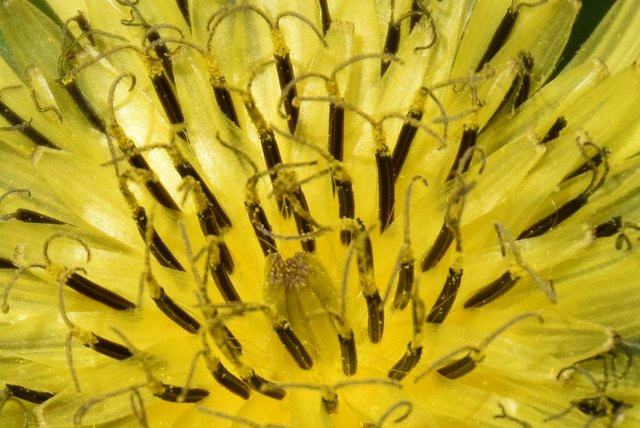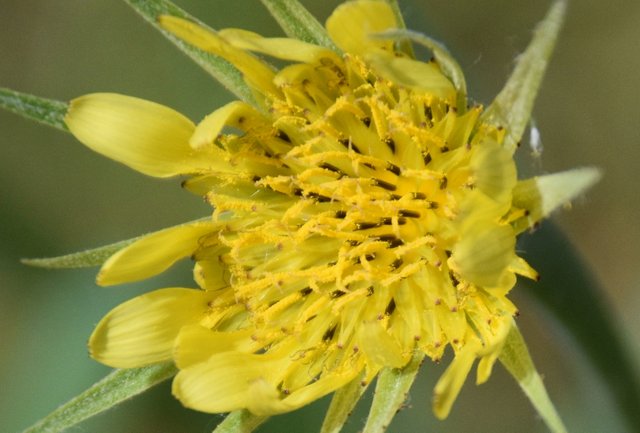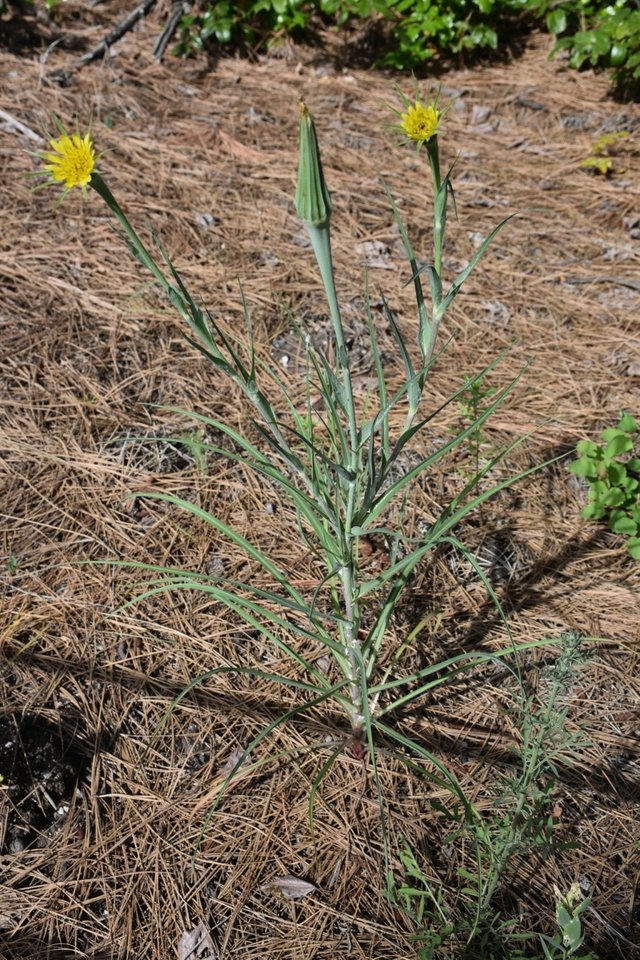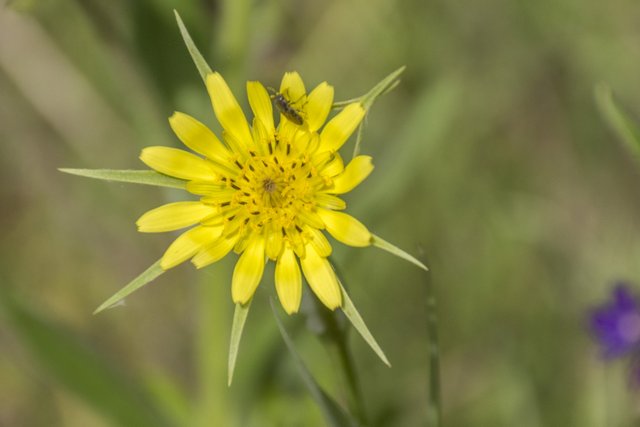Yellow Salsify Flowers
The edible Tragopogon lamottei.


Every year at the end of May and beginning of June the Yellow Salsify flowers begin to open all over the farm. For the longest time I had little awareness of them other than to pull them thinking they were just another dandelion type weed that will take over the yard. Again Steem has helped spur me to identifying the plants around me which is constantly causing me to learn new and useful information. Normally I try to write up a lot of this info in my own words but this time I have to quote a couple of sections because the information is too well written.
Moscow salsify is a hybrid of western and meadow salsify, while remarkable goatsbeard is a hybrid of western and common salsify. The hybrids typically have characteristics intermediate between the two parents. Moscow salsify and remarkable goatsbeard allegedly escaped from the Washington State University garden in Pullman, Washington, prior to the 1950s.
Source
This is the variety I have on the farm, I am sure of it. We are only an couple hours from Pullman and WSU and with the transfer of goods between Spokane and Pullman, guaranteed these found their way north.

Being a member of the Asteraceae family makes the Salsify a relative of the Dandelion which is itself edible. Now that I know the taxonomy of the plant I am going to try pulling some for the roots. @stryeyz loves oysters so I am anxious to see if ours have the same semblance.
Common Salsify as an Edible Plant Although the roots of all the salsify species found in North America are edible, common salsify is the species that is widely cultivated as a vegetable. This plant is often called “vegetable oyster” or “oyster plant,” referring to the faint oyster-like flavor possessed by the roots. The parsnip-like roots can be harvested in spring, but the flavor is reportedly enhanced if roots are harvested after a freeze in the fall. A botanist from the 16th century described the taste as surpassing that of carrots or parsnips. The greens may also be eaten and have a sweet taste. Uses for common salsify range from soup and salads to a dietetic medicine. The use of common salsify as a vegetable plant has primarily occurred in Europe and has declined over time.
Source

Salsify is a biennial plant meaning that the plant grows leaves and a taproot the first season of growth then dies back above ground over the winter. The second season the plant puts up a stem and flower stalks. The number of flowers and the height of the stem are dependent upon the amount of energy the taproot was able to store the prior year.
IMPORTANCE TO WILDLIFE AND LIVESTOCK:
Yellow salsify provides forage for native ungulates, small mammals, birds, and livestock and may also be consumed by bears. Seeds, flowers, foliage, and roots are eaten.... In Idaho and Montana, yellow salsify is an important juvenile sage-grouse food.OTHER USES:
Yellow salsify is edible and has been used to treat dog or coyote bites, boils, sore throats, and internal injuries of horses. Young yellow salsify leaves, stems, and roots are edible. Natives of British Columbia chewed the coagulated milk from yellow salsify stems like gum.
Source


Check out my blog @flemingfarm
Fleming Family Farm
FLEMING FAMILY FARM, LLC
Sustainable & Organic Methods | Heirloom Produce
All images are original works of Fleming Family Farm unless otherwise notated and credited.
If you find this post useful or entertaining, your support is greatly appreciated by upvoting, resteeming, following, or setting us to autovote on SteemAuto!




Thanks! I never knew what that was. Next time it comes up in the lawn, I will transplant it somewhere safe.
We have these growing in the park I work at... and I had no idea they were edible!